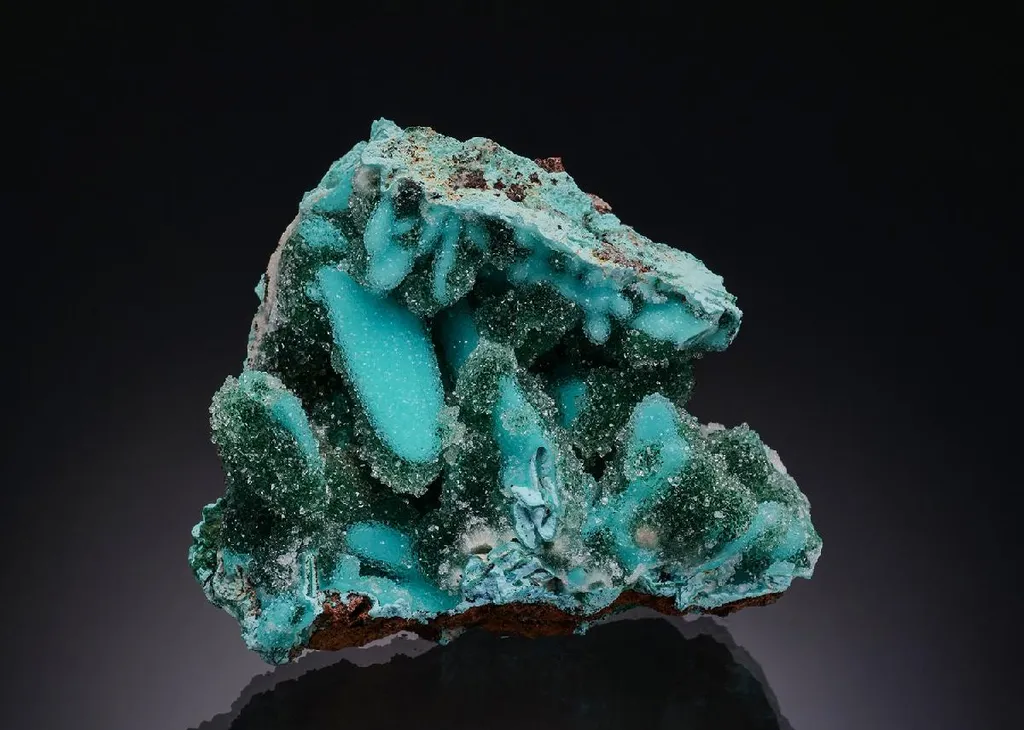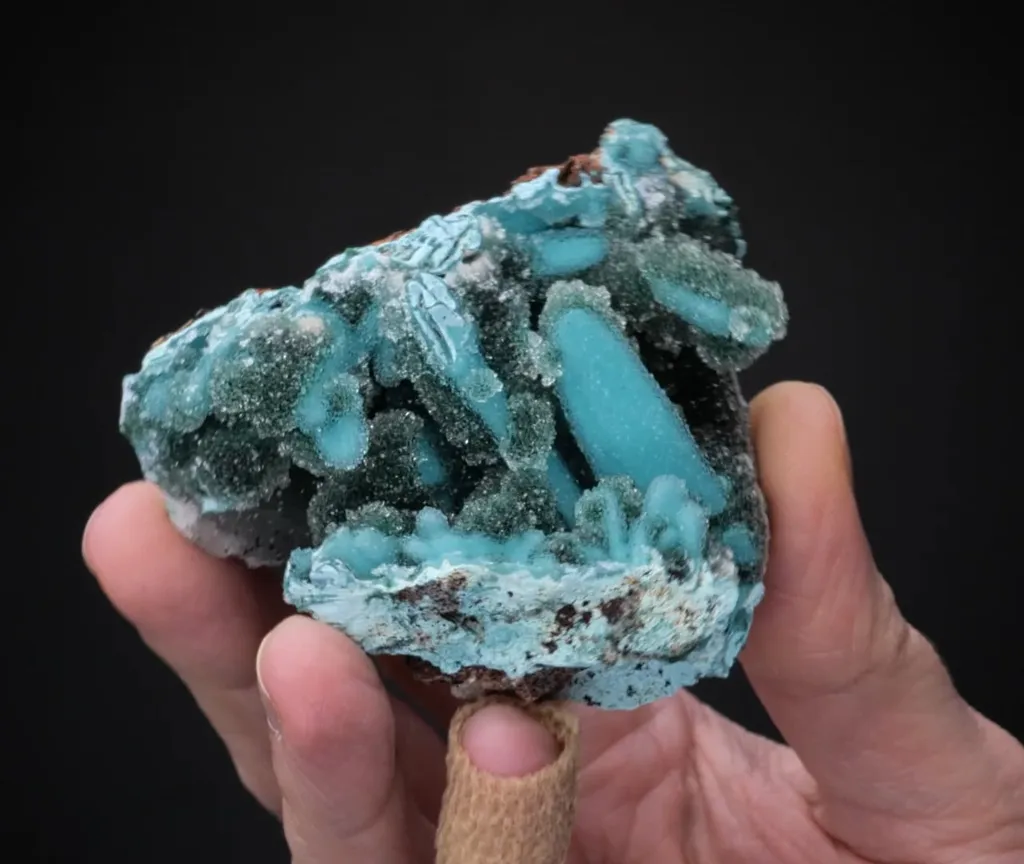The colour of this very large miniature specimen from the Tenke-Fungurume area in Kolwezi mining district, DR Congo is exquisite even before we consider what it is. It comprises an attractive array of pale turquoise blue bladed crystals rising up from a similar, but slightly paler coloured matrix with patches of rusty iron oxides. These blue bladed crystals are then coated with sparkling drusy Quartz, or studded with green Malachite and then coated in Quartz. It is only when one realizes what these crystals are, or should I say "were" that the complexity arises. These are blades of Chrysocolla - an amorphous copper silicate - coated with a fine layer of colourless Quartz crystals, but Chrysocolla does not form crystals, let alone freestanding bladed crystals. The Chrysocolla is a pseudomorph, or replacement, of Malachite, but Malachite does not form bladed crystals like these either! So, the Malachite was also a pseudomorph, but after bladed Azurite, meaning that these are Quartz coating Chrysocolla pseudomorphs after Malachite pseudomorphs after Azurite. Then there is the minor addition of more Malachite upon the bladed Chrysocolla, but before the encapsulation by Quartz - complicated or what!
💡 Tip: Click on chart columns to view sold specimens in each price range!

